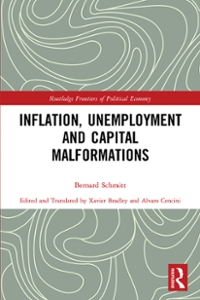Provide answers to the questions below
Example 19.12.1. You are actuary to a pension scheme which provides the following benefits: (a) a pension of , x final salary for each year of service (including fractions pro rata) on retire- ment for "age" or "ill-health" reasons. (b) a lump sum on retirement of 3 times the annual pension. Your actuarial basis is that given in the "Formulae and Tables", and you calculate reserves prospect tively, ignoring expenses. Final salary is the average annual salary in the 3 years before retirement. Members pay contributions at the rate of 2% of salary. The total contribution rate is assessed for each member separately, and is the proportion of salary which will pay for the benefits, when the member joins, i.e. the prospective reserve at the entry date is zero. 1. Find the employer's contribution rate for a member joining at age 20. 2. Find the reserve held for a member aged 45, with salary at the rate of 20,000 per annum, who joined the employer at age 20. 3. Your pension scheme accepts transfer values from other pension schemes. Suppose that a life aged 45 joins the scheme, bringing a transfer value of f10,000. The member's current salary rate is f15,000 p.a., and he asks for his transfer value to be used to give him "added years" of service, i.e. to credit him with n years of past service. Find n, given that, in the event of death in service, the transfer value will be returned with compound interest at 3% p.a. Note There are no withdrawals over age 45 in the Tables, so we need not specify what happens to the transfer value in that event.Exercise 13.5 A stock is currently priced at $400. The price of a six-month European call option with a strike price of $420 is $41. The risk free rate of interest is 7% per year, compounded continuously. Assume the BlackScholes pricing formula applies. (a) Calculate the current price of a six-month European put option with the same exercise price. State the assumptions you make in the calculation. (b) Estimate the implied volatility of the stock. (c) Calculate the delta of the option. (d) Find the hedging portfolio of stock and risk-free zero-coupon bonds that a writer of 10 000 units of the call option should hold. Exercise 13.6 A binomial model for a non-dividend paying security with price .5} at timer is as follows: the price at time t + 1 is either 1.25 .5} or 0.35}. The risk-free rate of interest is 10% per time unit effective. (a) Calculate the risk neutral probability measure for this model. The value of Si} is 100. A derivative security with price D; at time t pays the following returns at time 2: 1 isz=156.25, Dz: 2 ing=100, 0 11:32:64. (b) Determine DI when S 1 = 125 and when 51 = 30 and hence calculate the value of Dg. (c) Derive the corresponding hedging strategy, i.e. the combination of the underlying security and the risk-free asset required to hedge an investment in the derivative security. ((1) Comment on your answer to (c) in the light of your answer to part (b). Exercise 13.7 Anon-dividend paying stock has a current price of $8.00. In any unit of time (1', r+ 1) the price of the stock either increases by 25% or decreases by 20%. $1 held in cash between times i and r + 1 receives interest to become $1.04 at time t + 1. The stock price after 2' time units is denoted by .5}. 430 Option pricing (a) Calculate the risk-neutral probability measure for the model. (b) Calculate the price (at time t = 0) of a derivative contract written on the stock with expiry date 1' = 2 which pays $10.00 if and only if S; is not $8.00 (and otherwise pays 0)








